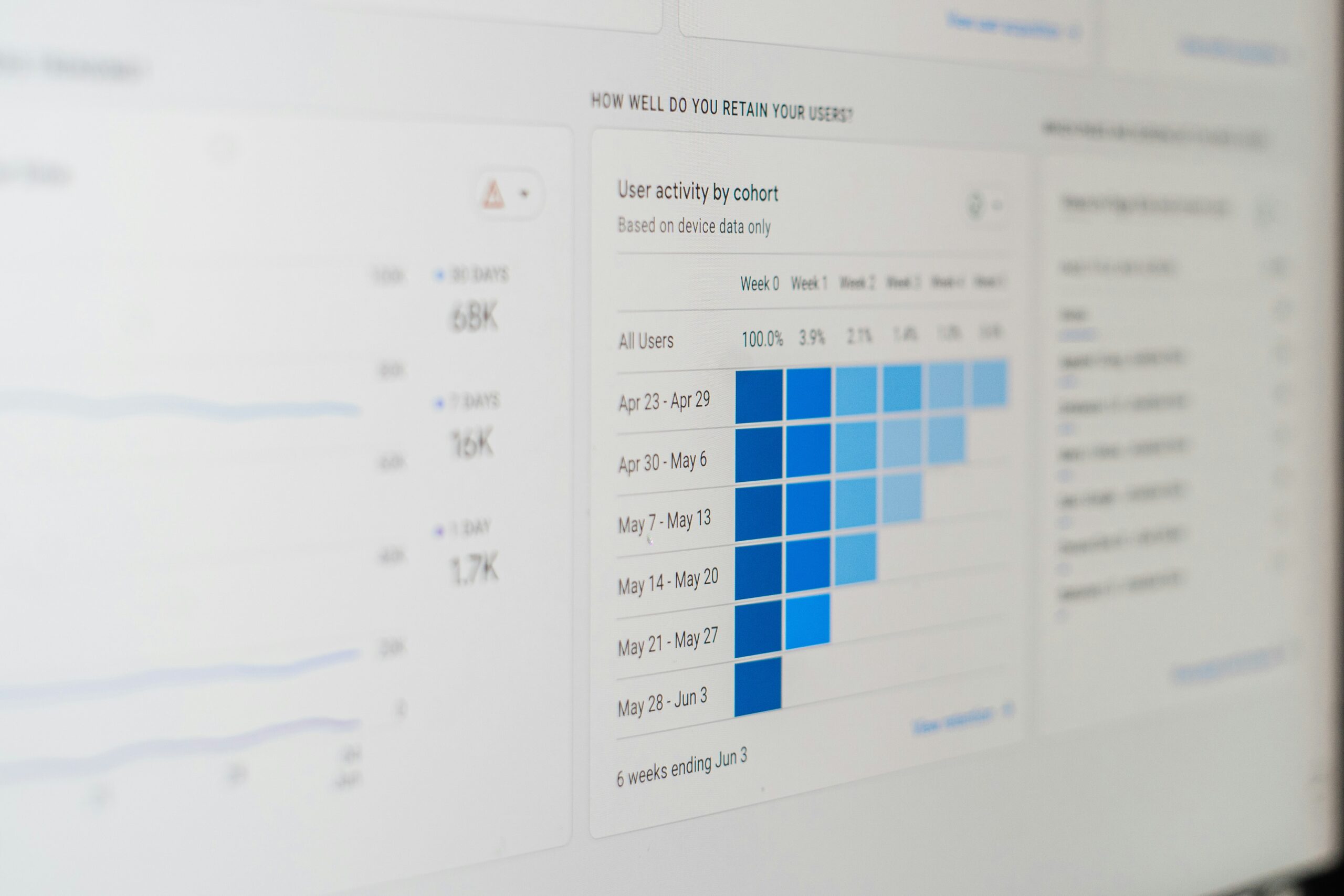Is your website slowing down, experiencing security issues, or failing to attract visitors? Regular maintenance is crucial for optimal website performance. This article explores effective strategies for website upkeep, including performance monitoring, security updates, and content optimization. By implementing these maintenance techniques, you’ll ensure your site remains fast, secure, and reliable, ultimately improving user experience and boosting your online presence.
Key Takeaways
- Regular website maintenance improves performance, security, and user experience
- Optimizing load speed and ensuring mobile responsiveness are crucial for user satisfaction
- Monitoring performance metrics and implementing backup solutions safeguard against data loss and downtime
- Engaging with user feedback enables continuous improvement and aligns websites with user expectations
- Long-term maintenance requires consistent schedules, resource allocation, and team training on best practices
Understanding Website Maintenance for Optimal Performance

Website maintenance involves regular checks and updates to ensure optimal performance and longevity. This process examines website behavior, addressing issues that may hinder user experience or search engine rankings.
Effective maintenance strategies focus on both front-end and back-end logistics. This includes optimizing code, updating content, and ensuring server-side efficiency to enhance overall website productivity.
Regular maintenance acts as a preventive measure, reducing the likelihood of major issues and extending the website’s lifespan. It keeps the site running smoothly, much like a well-oiled machine, ensuring consistent performance and user satisfaction.
Key Strategies for Effective Website Maintenance
Effective website maintenance strategies encompass regular content updates, robust security measures, load speed optimization, mobile responsiveness, and fixing broken links. These key approaches enhance user engagement, protect assets, improve system performance, and boost SEO. By implementing these strategies, website owners can ensure their digital information remains current, secure, and accessible across various devices, fostering a positive user experience and maintaining competitive edge in the online landscape.
Regular Content Updates Foster Engagement
Regular content updates play a crucial role in fostering engagement and reducing the mean time to repair during emergencies. By consistently refreshing website content, businesses can ensure their information remains current and relevant, addressing potential equipment or server issues promptly. This proactive approach to content management not only keeps visitors informed but also demonstrates a commitment to providing up-to-date resources, ultimately enhancing user experience and encouraging repeat visits.
Implementing Robust Security Measures Protects Your Site
Implementing robust security measures protects websites from potential threats and ensures customer satisfaction. A comprehensive security strategy includes regular corrective maintenance to address vulnerabilities and wear on systems. This proactive approach safeguards website health, preventing data breaches and maintaining user trust. Effective security measures are essential for long-term website performance and success:
Optimizing Load Speed Enhances User Experience
Optimizing load speed is a critical aspect of website maintenance management that significantly enhances user experience. By implementing effective CMMS strategies, website owners can reduce the risk of slow-loading pages and improve overall performance. Regular feedback from users and monitoring tools helps identify areas for improvement, ensuring that the website’s digital space remains efficient and responsive.
- Compress images and optimize file sizes
- Minify CSS, JavaScript, and HTML
- Leverage browser caching
- Use content delivery networks (CDNs)
- Reduce server response time
Ensuring Mobile Responsiveness Meets User Expectations
Ensuring mobile responsiveness meets user expectations is a critical maintenance task in the age of data science and artificial intelligence. Website owners can leverage predictive analytics and AI-powered engines to optimize their sites for various devices, ensuring a seamless user experience across platforms. By implementing responsive design techniques and regularly testing on different screen sizes, businesses can maintain their competitive edge and keep users engaged, regardless of the device they use to access the site.
Fixing Broken Links Improves SEO and User Navigation
Fixing broken links is a crucial aspect of website maintenance, improving both SEO and user navigation. By understanding computerized maintenance management systems, website owners can efficiently identify and rectify broken links, enhancing the overall user experience. This process involves root cause analysis to determine why links fail, allowing for proactive measures to prevent future issues. Regular link audits and updates contribute to improved energy efficiency and intelligence in website performance:
Monitoring Website Performance Metrics
Monitoring website performance metrics is crucial for effective maintenance and optimal performance. Website owners can gain valuable insights into user behavior and site reliability by analyzing visitor analytics, using uptime monitoring tools, assessing page load times, and tracking conversion rates. This data-driven approach enables predictive and preventive maintenance, enhancing user experience and facilitating efficient troubleshooting through comprehensive data analysis.
Analyzing Visitor Analytics Provides Insight Into User Behavior
Analyzing visitor analytics provides companies with valuable insights into user behavior, helping them achieve their goals more effectively. Businesses can create a comprehensive inventory checklist of user interactions by examining data on page views, session duration, and user flow. This data-driven approach enables organizations to leverage machine learning algorithms to identify patterns and trends, optimizing their website’s performance and tailoring content to meet user expectations.
Using Uptime Monitoring Tools for Reliability
Uptime monitoring tools play a crucial role in ensuring website reliability, particularly in the manufacturing sector where data-driven decisions are paramount. These tools continuously track website availability, alerting administrators to potential issues before they impact user experience or disrupt internet-based operations. By investing in robust uptime monitoring solutions, companies can maximize their overall equipment effectiveness (OEE) and maintain a strong online presence, essential for success in today’s digital landscape.
Assessing Page Load Times for Better SEO
Assessing page load times is a critical performance indicator for organizations implementing total productive maintenance strategies. By analyzing load time statistics, website owners can optimize their enterprise asset management, ensuring faster page rendering and improved search engine rankings. This data-driven approach allows organizations to identify bottlenecks, streamline resource allocation, and enhance overall website performance, ultimately contributing to a better user experience and increased organic traffic.
Tracking Conversion Rates to Measure Success
Tracking conversion rates provides valuable insight into website performance and user behavior. By monitoring these metrics, organizations can assess the cost-effectiveness of their digital strategies and identify areas for improvement. Regular inspection of conversion data helps reduce the mean time between failures in achieving business goals, enhancing visibility into user interactions and overall website success.
Utilizing Backup and Recovery Solutions
Implementing effective backup and recovery solutions is crucial for maintaining website uptime and overall equipment effectiveness. Regular backup schedules minimize data loss, while testing recovery plans ensures quick restoration. These practices are essential tools for learning from past issues, addressing root causes, and optimizing website performance. By prioritizing data protection and recovery readiness, organizations can safeguard their digital assets and maintain continuous operations.
Establishing Regular Backup Schedules Minimizes Data Loss
Establishing regular backup schedules is a critical maintenance practice that minimizes data loss and enhances operational efficiency. By allocating resources to automated backup systems, website owners can protect against potential failures and maintain plant-like consistency in their digital operations. This proactive approach ensures that in the event of a system failure, recent data can be quickly restored, reducing downtime and maintaining the website’s overall performance.
Testing Recovery Plans Ensures Quick Restoration
Testing recovery plans is a critical aspect of facility management that ensures quick restoration of website functionality in case of system failures. Organizations can enhance their predictive capabilities and improve efficiency by conducting regular audits and simulating potential disruptions. This proactive approach increases system availability and minimizes downtime, allowing businesses to maintain a competitive edge in the digital landscape.
Conducting Routine Technical Audits
Routine technical audits are essential for maintaining optimal website performance. These audits involve checking software updates to ensure functionality, evaluating SEO performance for continuous improvement, and reviewing hosting reliability. By implementing a computerized maintenance management system, website owners can conduct risk assessments, track assets, and enhance user experience. Regular audits help identify and address potential issues before they impact website performance.
Checking for Software Updates Maintains Functionality
Regular software updates are crucial for maintaining website functionality and security. A sensor-based monitoring system allows website administrators to track and manage updates efficiently through a centralized dashboard. This approach leverages telecommunications technology to ensure that the knowledge base and database remain current, reducing vulnerabilities and enhancing overall performance.
Evaluating SEO Performance for Continuous Improvement
Evaluating SEO performance is essential for continuous improvement and reducing downtime. By analyzing key metrics and creating a comprehensive table of contents for SEO efforts, website owners can identify areas for enhancement and allocate resources effectively. Regular assessments help businesses understand customer behavior, optimize their content as a valuable resource, and increase the percentage of organic traffic, ultimately leading to improved search engine rankings and visibility.
Reviewing Hosting Performance to Ensure Reliability
Reviewing hosting performance ensures website reliability and safety. Regular checks detect potential vibration issues in server hardware, preventing downtime. To maintain optimal performance, website owners should monitor server response times, uptime percentages, and resource usage. These metrics provide insights into hosting quality and help identify areas for improvement:
Engaging With User Feedback
Engaging with user feedback is crucial for effective website maintenance. By collecting user reviews, website owners can identify areas for improvement and address user concerns. Implementing feedback loops enables continuous enhancement, allowing businesses to refine their online presence based on real user experiences. These strategies help optimize website performance and user satisfaction.
Collecting User Reviews to Identify Areas for Improvement
Collecting user reviews provides valuable insights for website improvement. By analyzing feedback, website owners can identify pain points, enhance user experience, and prioritize updates. This process helps businesses align their online presence with user expectations, leading to increased satisfaction and engagement.
Implementing Feedback Loops for Continuous Enhancement
Implementing feedback loops enables continuous enhancement of website performance. By systematically collecting and analyzing user input, website owners can identify recurring issues, prioritize improvements, and refine their online presence. This iterative process helps businesses adapt to changing user needs, ensuring their websites remain relevant and user-friendly over time.
Planning for Long-Term Website Maintenance
Long-term website maintenance ensures consistent performance and growth. Setting a regular maintenance schedule promotes consistency, while allocating resources for ongoing support enables continuous improvement. Training team members on best practices enhances efficiency and effectiveness. These strategies work together to maintain optimal website performance over time.
Setting a Maintenance Schedule for Consistency
Setting a consistent maintenance schedule is crucial for long-term website performance. By establishing regular check-ups and updates, website owners can proactively address potential issues before they impact user experience. A well-planned schedule ensures that all aspects of the site, from content freshness to security patches, are systematically reviewed and optimized, maintaining the website’s effectiveness and reliability over time.
Allocating Resources for Ongoing Support and Development
Allocating resources for ongoing support and development is essential for maintaining website performance and growth. Organizations should budget for regular updates, security enhancements, and feature improvements to keep their websites competitive and user-friendly. By investing in skilled personnel and necessary tools, businesses can ensure their websites remain responsive to changing user needs and technological advancements.
Training Your Team on Best Practices for Maintenance
Training team members on best practices for website maintenance is crucial for long-term success. Organizations ensure their websites remain up-to-date and secure by providing comprehensive education on security protocols, content management, and performance optimization. Regular training sessions help staff stay informed about the latest industry trends and technologies, enabling them to implement effective maintenance strategies:
Conclusion
Effective website maintenance strategies are crucial for ensuring optimal performance, security, and user satisfaction. Regular updates, robust security measures, and performance optimization contribute to a seamless user experience and improved search engine rankings. Implementing backup solutions, conducting technical audits, and engaging with user feedback foster continuous improvement and long-term success. By prioritizing these strategies and allocating resources for ongoing support, businesses can maintain a competitive edge in the digital landscape and maximize their online presence.
